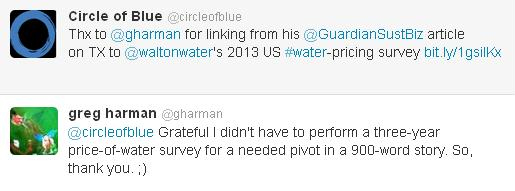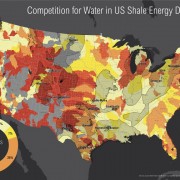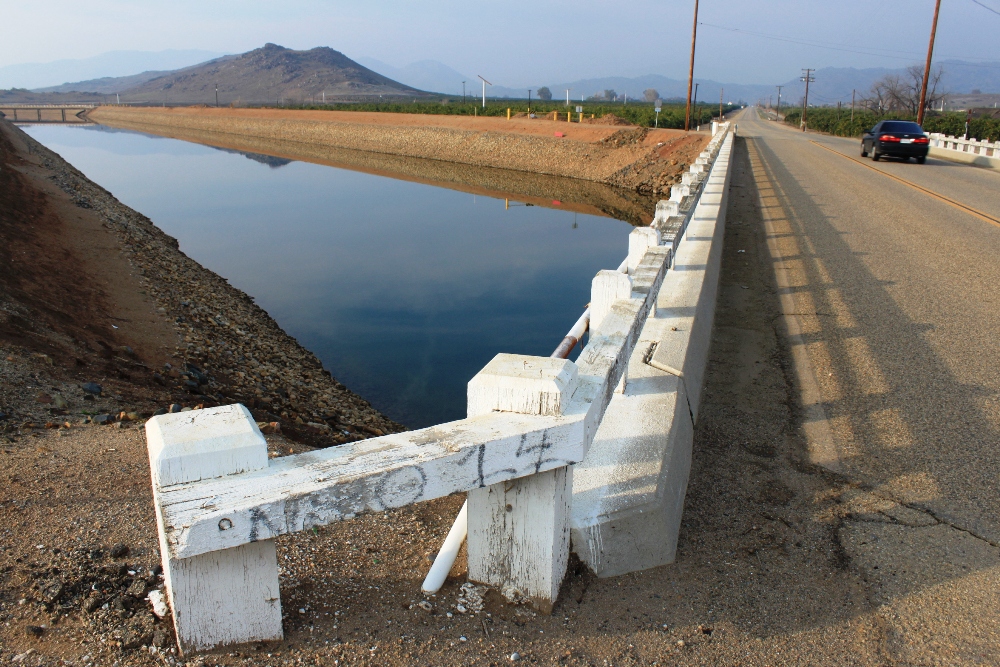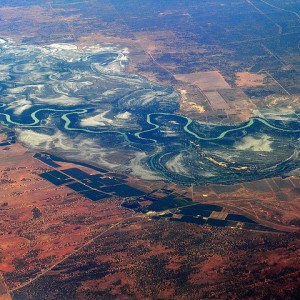Saving Money by Storing the Rain
Rainwater harvesting, a disruptive idea, catches on with businesses. CoB reporter Brett Walton responds to a recent article in the Guardian.

Last week, voters in Texas approved Proposition 6, a constitutional amendment creating a state water bank. The bank, seeded with $US 2 billion from state reserves, will finance projects in the $US 50 billion state water plan, released last year. But one proven idea was left out. Rainwater harvesting – the process of trapping and storing what falls from the sky and then using it on-site – was not a recommended strategy in the plan.
In an article posted to the Guardian’s Sustainable Business site, San Antonio-based journalist Greg Harmon cites my reporting on water prices in the United States to underscore a point about the water-saving practice that is catching on with businesses that operate large facilities, like the collection systems installed at Home Depot, Lowe’s, and Walmart.
“Walmart has a number of such systems including a Sam’s Club store in Fayetteville, Arkansas, that has cut its use of city water by an estimated 1.5 million gallons per year, according to the company. Those water savings are likely to pay off quickly as utilities raise their rates across the country in response to rising demand due to everything from rising populations in some areas, new EPA stormwater regulations, and the replacement of aging infrastructure.” –Greg Harmon, the Guardian
Indeed water rates are rising – though my annual survey looks at residential, not commercial rates. And 1.5 million gallons per year does seem like a large number. But the financial savings are tiny for the retail behemoth. The city of Fayetteville does not post its water rates online, but let’s assume a rate of $US 5 per 1,000 gallons, which is probably on the high side. That amounts to a savings of $US 7,500 per year for a company that rings up roughly $US 88 million annually in revenue at each of its 611 Sam’s Club stores.
Harman does hit on one point that is worth serious debate: how do decentralized systems such as rainwater harvesting fit into the existing business model for water utilities? The growing push for water conservation has forced utilities, which are in the business of selling water, to fiddle with their rate structures. More and more, utilities are recovering their costs through higher fixed fees. Water sales fluctuate, but the delivery systems – the pipes, pumps, and treatment plants – still have to be maintained and expanded to new homes.
Rooftop solar panels are causing a similar disruption for electric utilities. When people can generate their own power and store water in their own tanks, they send less money to Pacific Gas and Electric Co. or San Diego Public Utilities. Neither rooftop solar nor rainwater harvesting is at a scale right now to send shock waves through the system, but the ripples are already there.
Do you collect rainwater? What regulatory obstacles do you face? How much money do you save? Let me know directly by contacting Brett Walton or on Twitter @waltonwater or by commenting below.
–Brett Walton, Circle of Blue reporter
Brett writes about agriculture, energy, infrastructure, and the politics and economics of water in the United States. He also writes the Federal Water Tap, Circle of Blue’s weekly digest of U.S. government water news. He is the winner of two Society of Environmental Journalists reporting awards, one of the top honors in American environmental journalism: first place for explanatory reporting for a series on septic system pollution in the United States(2016) and third place for beat reporting in a small market (2014). He received the Sierra Club’s Distinguished Service Award in 2018. Brett lives in Seattle, where he hikes the mountains and bakes pies. Contact Brett Walton








I was also struck by the similar challenges and debates presented by decentralized rainwater and rooftop solar systems and will look forward to any future coverage COB gives it. You’re right. I should have pointed out your study was focused on residential rates and that non-manufacturing commercial rates are not rising as fast (about 4-8 percent increase in the last decade, I think?). But as you calculate what rainwater harvesting may mean financially per store, I think you should also consider the presence of stormwater abatement fees and the fact that these systems frequently exempt properties from such fees entirely. Considering many of these systems are located in areas of low rainfall, perhaps more vital to that number is the threat of drought restrictions. According to one of the RWH companies mentioned, two of those stores in my story were either losing valuable nursery stock to watering restrictions or at risk of losing their city water entirely. I would guess the earnings of a few months in the garden department would increase those savings exponentially over the mere price of the water not purchased.
Hi,
My name’s Liz Kirchner. I’m with a water protection and conservation group called Friends of Accotink Creek in rapidly urbanizing northern Virginia in the Chesapeake Bay watershed. The 40% impervious surface increase in Fairfax over the last twenty years – much of it from commercial development like the parking lots, feeder road, and roofs of Sam’s Clubs, for us, means a storm-water management system overwhelmed by storm water volume. Initially, I’m thrilled by the notion of a retail behemoth recognizing storm water as a resource/taking responsibility for its impervious footprint. What are its downsides environmentally? Do you know whether anyone in Fayetteville is monitoring the effect (considerable? 1.5 million gallons sure sounds like a lot) storm water reduction on environmental degradation, flooding, infrastructure impact, tax burden, and/or general quality of life wear and tear? I googled around, but didn’t see…do you know whether the Sam’s Club marketing department is touting this as environmental responsibility? Research (2009 NIH) indicates that seeing governments/businesses/the larger society behaving with environmental responsibility bolsters the environmental responsibility of young people.
Thanks very much,
Liz and the Friends of Accotink Creek @accotinkcreek1 and http://www.accotink.org